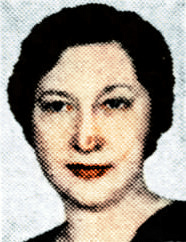
Ferguson: Ernie Pyle
By Mrs. Walter Ferguson
My last letter from Ernie Pyle came from Albuquerque:
I haven’t written you in a long time. Your piece which I was reading last night gave me the chance. One sentence struck me as so thoughtful, so true (men who have slept in foxholes and endured the hardships of actual war, develop a profound pity for the misfortunes of humanity) at least that’s the way I feel. I’m not sure all soldiers do.
My vacation hasn’t been much of a vacation. The public pressure has been unbelievable I’m taking of for the Pacific in a few days, I certainly Mrs. Ferguson don’t itch to go, but feel I must. I don’t suppose any of us will be the same by the time this whole thing is over.
He went to the Pacific and will not come back, dear, shy, lovable Ernie. To his personal friends and millions of devoted readers, the world will not be the same without him.
But Ernie wouldn’t have wanted eulogies. He gladly shared a soldier’s life; he did not try to avoid a soldier’s death. It seems a fitting climax to his great career as interpreter of American fighting men, that he should walk into the valley of shadows with those who went that way. They were his comrades in arms, his pals, and in death they are not divided.
His last dispatches are accounts of their valor, fellowship and mirth under stress of war. He leaves life with his genius at its full flower. He went at high tide – and all who do are blessed.
Let there be no lamentations for Ernie Pyle, although we who are bereft of him may sorrow for ourselves. He has found peace.